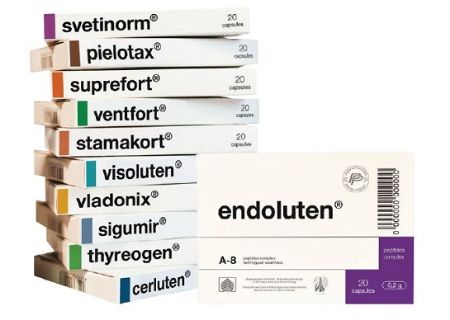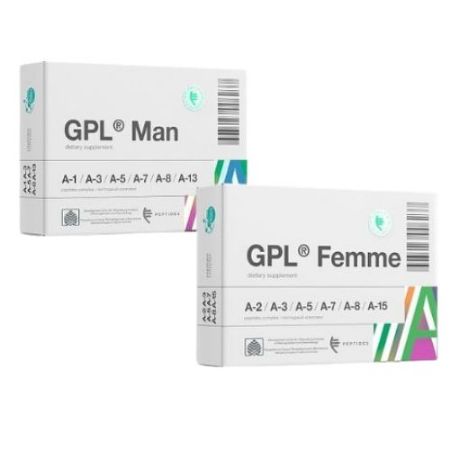- (0)
- You have no items in your shopping cart.
Peptides
Peptide bioregulators are fractions of proteins, the molecules of which are short chains (only 2-4 units) of amino acids. Initially, such peptides were isolated from the organs and tissues of animals, and then synthesized. Proteins, the main building material of the body, regulate most of its vital functions including the aging process. Over the years, the synthesis of proteins in cells as well as in a diseased state or under the influence of damaging factors is reduced. Peptides can restore the protein secretion in a cell, i.e. restore their 'performance'.
Khavinson peptides are physiologically active molecules. The name was given in honor of its discoverer Vladimir Khavinson. They effectively act to support and restore the body, increase life expectancy and its quality among the elderly and those who have reached old age. Their task is to activate and bifurcate DNA, in other words, to trigger gene expression, that is, to ensure the implementation of genetic information that allows the cell to prolong life. Every organism contains two types of important molecules. The first are peptide proteins that carry information. The second are DNA cells, which also contain information. However, they act as a matrix and are passive in themselves. Combining peptides with sections of DNA allows the synthesis of specific proteins that are necessary for the normal life of the body.
The correct functioning of peptides helps cells work in the required volume. Due to their proper functioning, reliable functioning of all organs occurs. If cell functioning is disrupted, organs also malfunction, resulting in various diseases.
When a person gets sick, medicine offers only one way - taking medications and drugs. They are artificial substances from which the body is not capable of creating living cells. After a large intake of medications, salts accumulate, which causes joint diseases and the formation of kidney stones.
Khavinson's peptides are organic substances that regulate the condition of cells. Thanks to them, the cells begin to function properly again, resulting in the body’s self-healing. The effect is considered to be the process of restoration of damaged organs due to the normalization of work at the cellular level. There is no need for chemical intervention or surgery.
cropv4.png)



